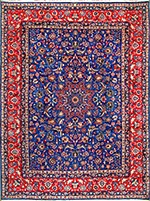Textiles Studies
Date of this Version
12-1996
Document Type
Article
Abstract
Reviewed work: The Topkapi Scroll: Geometry and Ornament in Islamic Architecture, Gulru Necipoglu. Santa Monica, CA: J. Paul Getty Publications, 1996.
Reproducing the patterns from a 15th-century scroll (Topkapi Palace Museum Library, MS H.1956) that served as a guide for architects and artisans, Necipoglu brilliantly explores the juncture of geometry and philosophy that informed art and architecture over the centuries. Lucid essays accompany illustrations the scroll's 114 sequential patterns and place this virtually unknown work the dynamic intellectual discourses on geometry, religion and building that taking place in Europe and parts of the Islamic world during the 15th century. The Babylonians, Pythagoras, Euclid and Plato, al-Farabi and the Neoplaton ists, Leonardo Fibonnaci of Pisa, Ghiyath al-Din al-Kashi, Albrecht Diirer Johannes Kepler, among others, are brought to bear in discussions of the history of mathematical thought and its non-linear relationship to architectural practice. Necipoglu develops convincing evidence for a tradition in which scrolls played an important role in the transmission of architectural theory and edge in the Islamic world.
Included in
Art and Materials Conservation Commons, Art Practice Commons, Fiber, Textile, and Weaving Arts Commons, Indigenous Studies Commons, Museum Studies Commons

